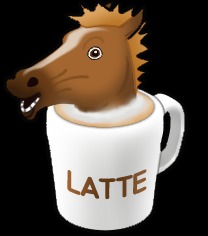| 일 | 월 | 화 | 수 | 목 | 금 | 토 |
|---|---|---|---|---|---|---|
| 1 | 2 | 3 | ||||
| 4 | 5 | 6 | 7 | 8 | 9 | 10 |
| 11 | 12 | 13 | 14 | 15 | 16 | 17 |
| 18 | 19 | 20 | 21 | 22 | 23 | 24 |
| 25 | 26 | 27 | 28 | 29 | 30 | 31 |
- Facial Landmark Localization
- Class Incremental
- Continual Learning
- CVPR2022
- Mask-and-replace diffusion strategy
- mmcv
- DualPrompt
- L2P
- img2pose: Face Alignment and Detection via 6DoF
- 베이지안 정리
- VQ-VAE
- learning to prompt
- Face Alignment
- timm
- CIL
- learning to prompt for continual learning
- Class Incremental Learning
- Markov transition matrix
- ENERGY-BASED MODELS FOR CONTINUAL LEARNING
- prompt learning
- requires_grad
- VQ-diffusion
- Vector Quantized Diffusion Model for Text-to-Image Synthesis
- Discrete diffusion
- Energy-based model
- Img2pose
- state_dict()
- Mask diffusion
- PnP algorithm
- Face Pose Estimation
- Today
- Total
목록備忘錄 (5)
Computer Vision , AI
cannot import name 'container_abcs' from 'torch._six'timm=0.3.2 version에서 발생한 문제 torch._six에 container_abcs가 없는 torch 버전을 사용해서 그렇다.collections.abc를 container_abcs로 import 해오는 것으로 해결할 수 있는 경우가 있다. # from torch._six import container_abcsimport collections.abc as container_abcs
# mmcv 2.0 이하 버전에 해당 우선 깔려 있는 mmcv를 pip으로 지운다.pip uninstall mmcvorpip uninstall mmcv-full 이후 버전을 명시하여 새로 mmcv를 설치한다.pip install mmcv-full==1.4.4 -f https://download.openmmlab.com/mmcv/dist/cu113/torch1.10/index.html https://download.openmmlab.com/mmcv/dist/cu113/torch1.10/index.html download.openmmlab.com pip으로 설치하되 뒤에 버전 명시를 해주어야함 버전 명시 예시https://download.openmmlab.com/mmcv/dist/cu{쿠다버전}/torch{..
state_dict()에는 requires_grad에 대한 정보가 안담기는 것으로 보인다. model.prompt_embeddings.requires_grad의 return 값은 True여도model.state_dict()['prompt_embeddings'].requires_grad의 return 값은 False로 나온다.
 Deep learning 수학 기초 이론 [Bayes theorem편]
Deep learning 수학 기초 이론 [Bayes theorem편]
글을 열면서 Deep learning 관련 논문을 보다 보면 자주 나오는 몇 가지 이론과 식들이 있는데 정리를 하지 않으니 한번 이해를 했어도 매번 까먹어서 다시 찾아보게 되는 상황이 와서 이번 기회에 차근차근 정리해보려 한다. 필요에 따라 구체적인 증명을 할 수도 있겠지만 수학적인 증명 같은 경우 잘 서술한 다른 글들이 많기 때문에 직관적인 이해와 어떤 때에 사용하는지에 대한 설명을 위주로 서술할 예정이다. 아마 지금 생각하고 있는 기준으로는 일단 Bayes theorem, Cross entropy, KL divergence, Monte Carlo method, Markov chain 정도 정리하지 않을까 싶다. Bayes theorem Bayes rule에 대한 간단한? 설명과 함께 Deep lear..
 StyleGAN
StyleGAN
기존 연구 및 문제점 Traditional한 PGGAN (Fig1.a) 같은 경우 latent vector z를 모델에 입력으로 넣어서 점점 upsampling을 진행하며 이미지를 생성함 이런 latent variable 기반 모델들은 직접적으로 noise z를 넣어서 latent space에 어떻게든 매핑시키다 보니까 학습 데이터셋의 확률 분포랑 비슷하게 latent space가 형성되버림(Fig2.b) 문제는 이게 썩 좋지만은 않을 수 있음 이런 경우 문제점 -> latent space가 entangle하게 됨 (각 특징들끼리 서로 얽혀있어서 분리가 되지 않음) 이렇게 되면 학습 데이터에 없는 데이터 분포를 생성하기 어려워짐 ex) 안경을 쓴 사람, 동양인 둘다 학습을 해서 안경쓴사람과 동양인을 생성..
